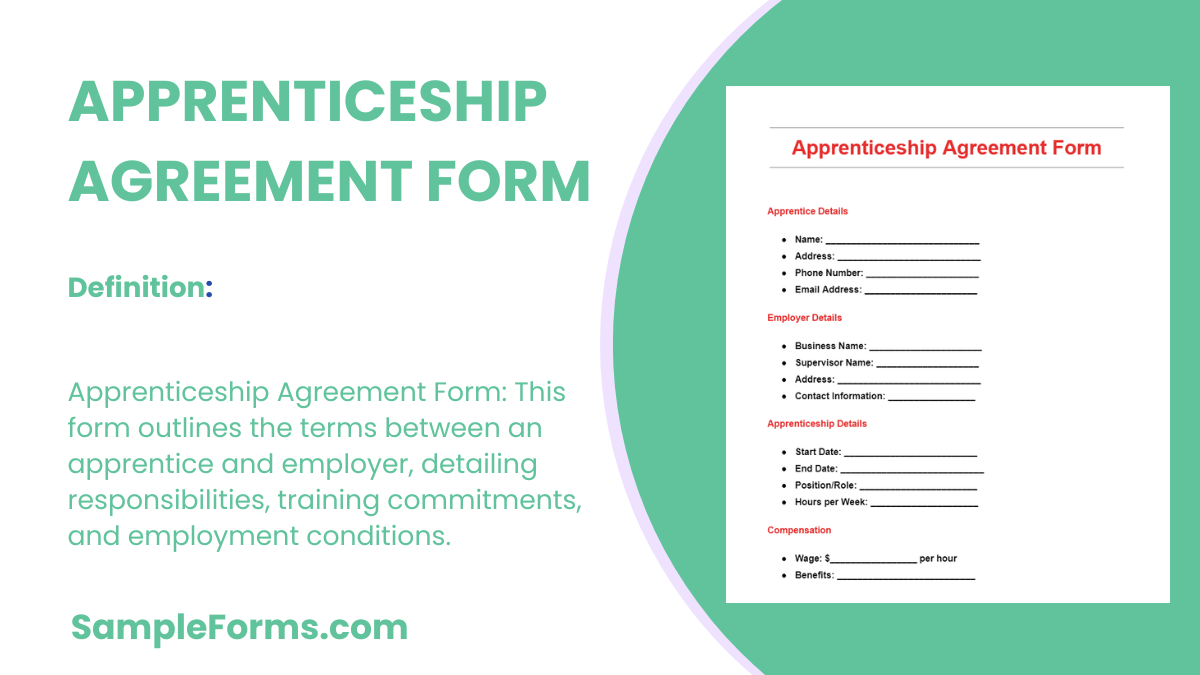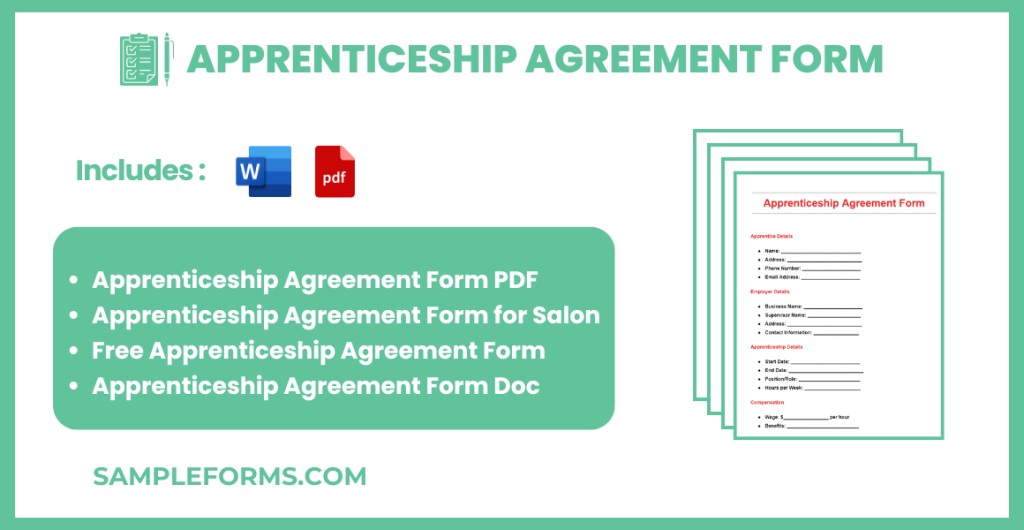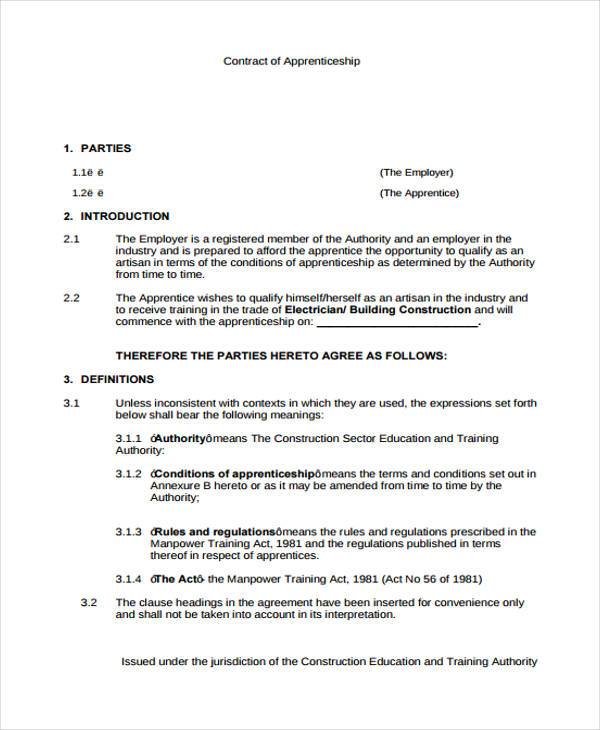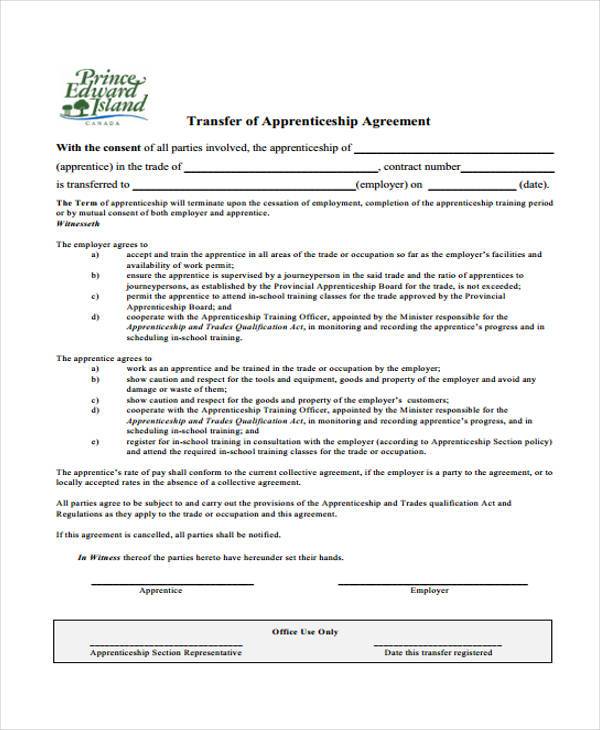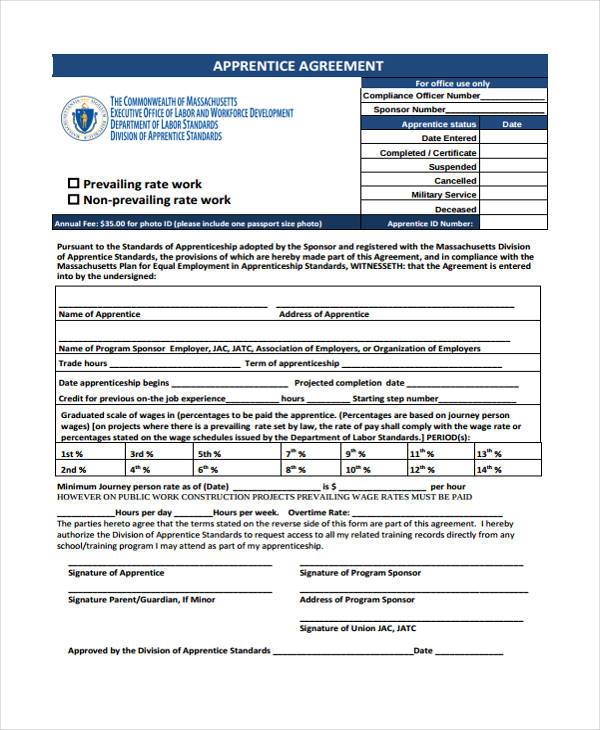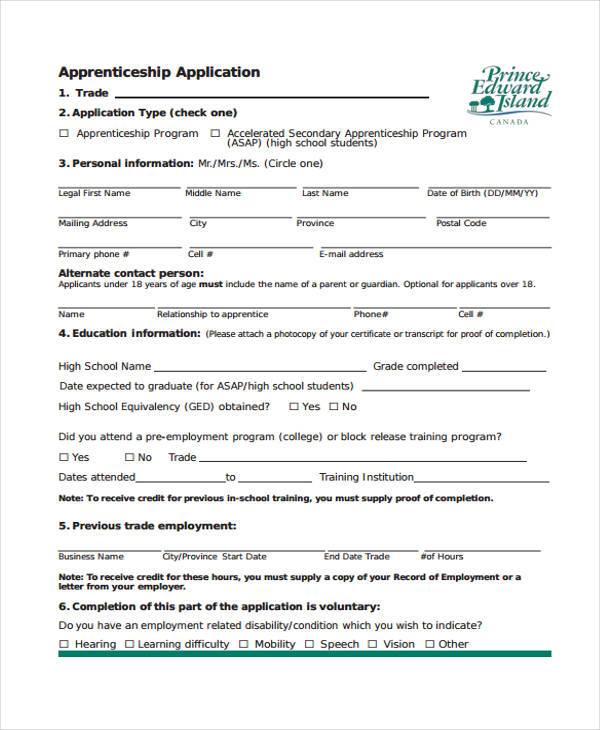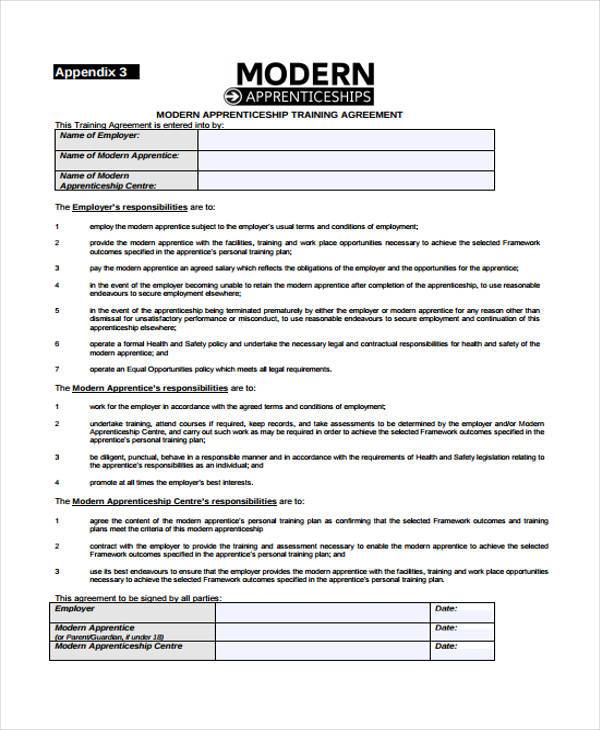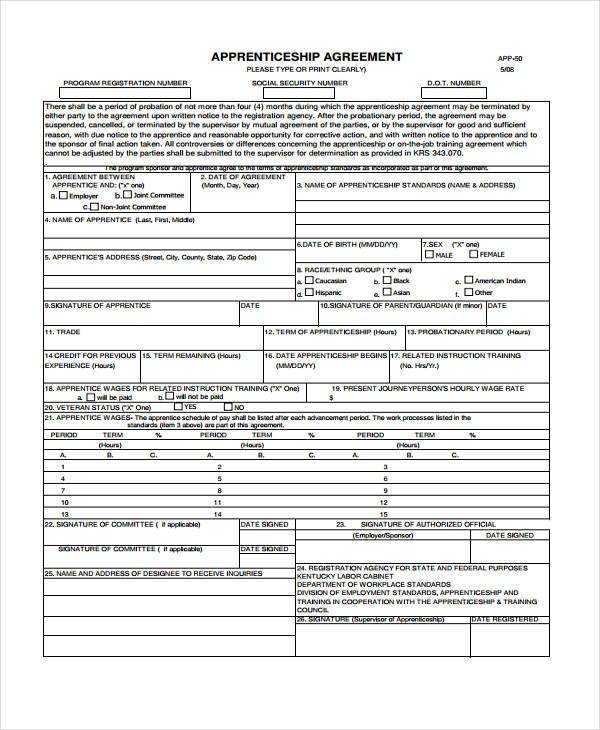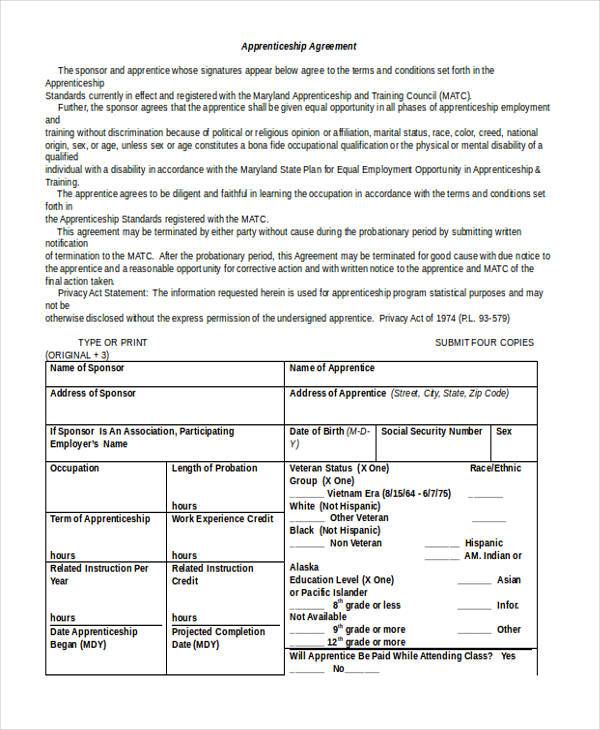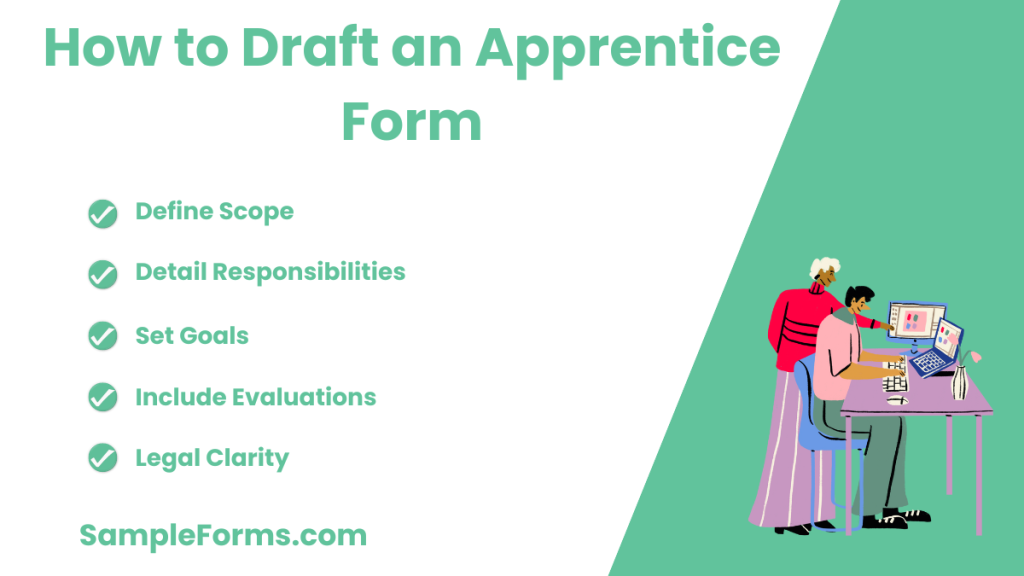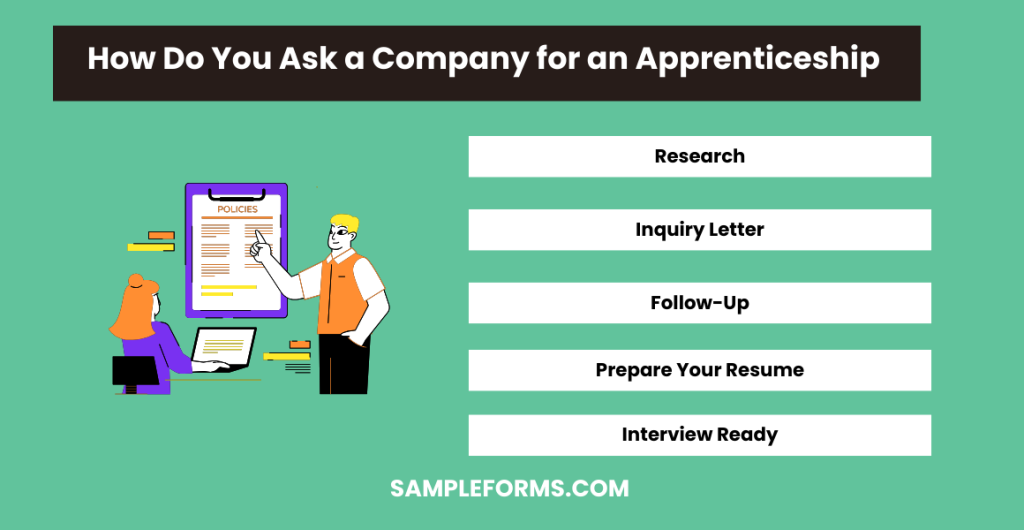Navigating the complexities of apprenticeship setups is crucial for both employers and apprentices. The Apprenticeship Agreement Form acts as a cornerstone in these relationships, detailing the mutual commitments and expectations. This guide provides an in-depth look at how to properly draft and implement these forms, including Agreement Form and Fillable Form to ensure ease of use and legal compliance. Whether you’re setting up an apprenticeship for trade skills, professional development, or educational purposes, understanding how to craft a comprehensive Apprenticeship Agreement Form is key to a successful and rewarding experience.
Download Apprenticeship Agreement Form Bundle
What is Apprenticeship Agreement Form?
An Apprenticeship Agreement Form is a legally binding document between an apprentice and an employer that outlines the specific terms of the apprenticeship. This form includes detailed information about the training and work arrangements, duration of the apprenticeship, expectations for both parties, and the qualifications the apprentice will gain. It serves to protect the rights and responsibilities of both the apprentice and the employer, ensuring a clear framework for the educational and work-related components of the apprenticeship program.
What is the best Sample Apprenticeship Agreement Form?
This sample Apprenticeship Agreement Form is designed to formalize the relationship between an apprentice and an employer, outlining the terms, conditions, and expectations of the apprenticeship program.
APPRENTICESHIP AGREEMENT
Between: [Employer Name]
- Address: ________________________
- Contact: ________________________
And: [Apprentice Name]
- Address: ________________________
- Contact: ________________________
Apprenticeship Program Details:
- Title: ___________________________
- Occupation: _____________________
- Duration: From [Start Date] to [End Date]
- Work Hours: _____________________
- Training Schedule: _______________
Compensation and Benefits:
- Wage: $______ per hour
- Benefits: _______________________
Duties and Responsibilities:
- Apprentice: _____________________
- [List specific duties and learning objectives]
- Employer: _______________________
- [List support, training, and supervision commitments]
Terms and Conditions:
- Probationary Period: ______________
- Performance Reviews: _____________
- Termination Clauses: ______________
Signatures:
- Apprentice Signature: ____________ Date: _______________
- Employer Signature: ______________ Date: _______________
Instructions:
- Both parties should review all terms.
- Fill in all blanks with accurate information.
- Sign and date the form to indicate agreement.
Note: This form is a template and should be adapted to meet specific legal requirements and organizational policies.
Apprenticeship Agreement Format
1. Introduction
- Employer Details: Name and address of the employer.
- Apprentice Details: Name and address of the apprentice.
2. Apprenticeship Terms
- Program Outline: Describe the training and educational outline.
- Duration: State the start and end dates of the apprenticeship.
3. Compensation and Benefits
- Wage: Amount and frequency of wage payments.
- Benefits: List any benefits provided (e.g., health insurance).
4. Working Conditions
- Hours of Work: Specify daily and weekly work hours.
- Safety and Supervision: Outline safety protocols and supervision arrangements.
5. Signatures
- Employer Signature:
- Apprentice Signature:
- Date:
Apprenticeship Agreement Form PDF
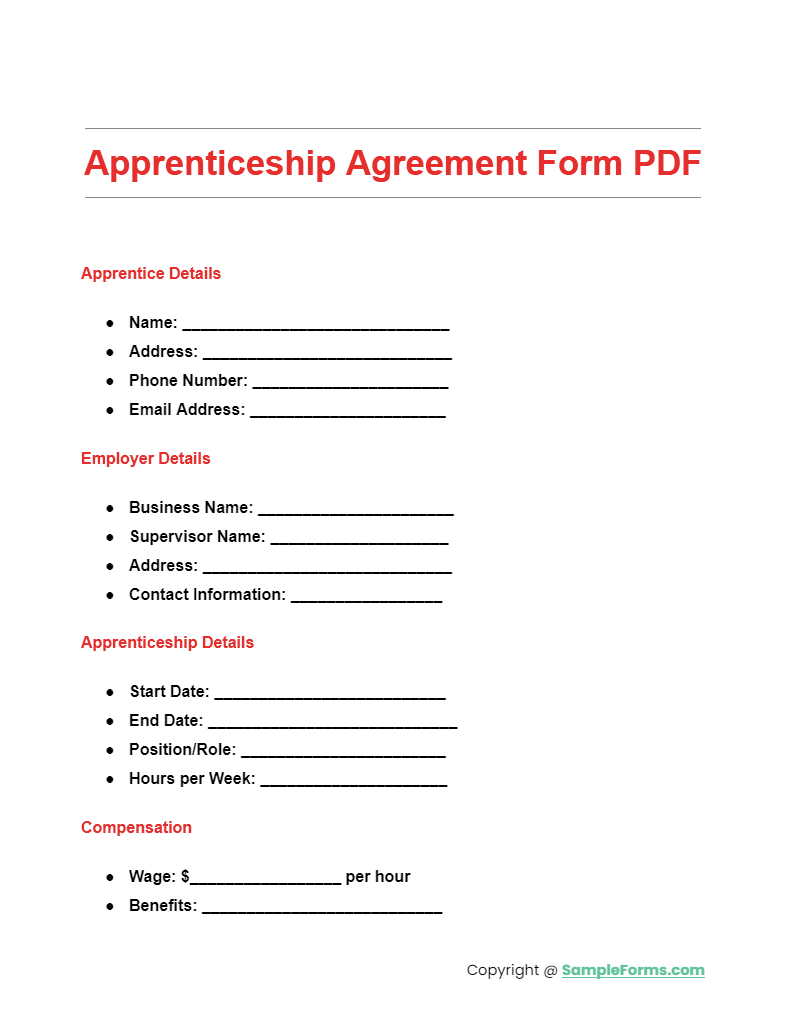
Download the PDF version of the Apprenticeship Agreement Form, designed to formalize training terms and outline the apprenticeship structure, akin to a Tenancy Agreement Form in defining occupancy terms.
Apprenticeship Agreement Form for Salon
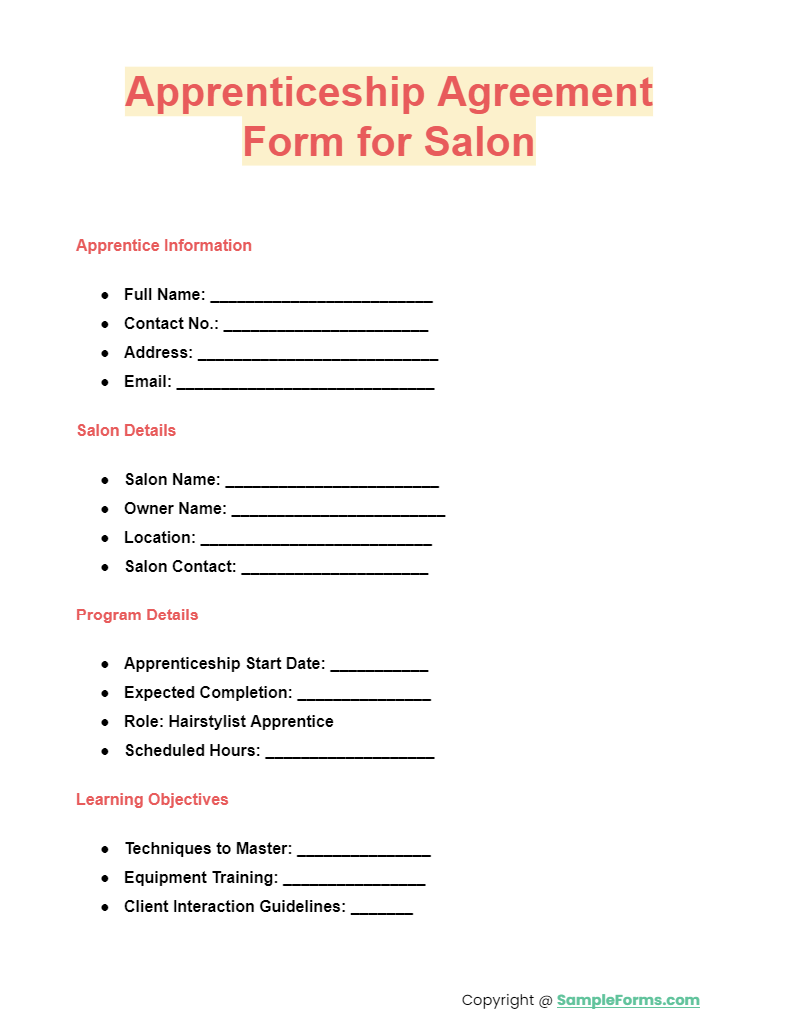
Tailored for the beauty industry, this form details the specific skills and techniques to be learned, much like a Business Agreement Form outlines corporate partnerships.
Free Apprenticeship Agreement Form
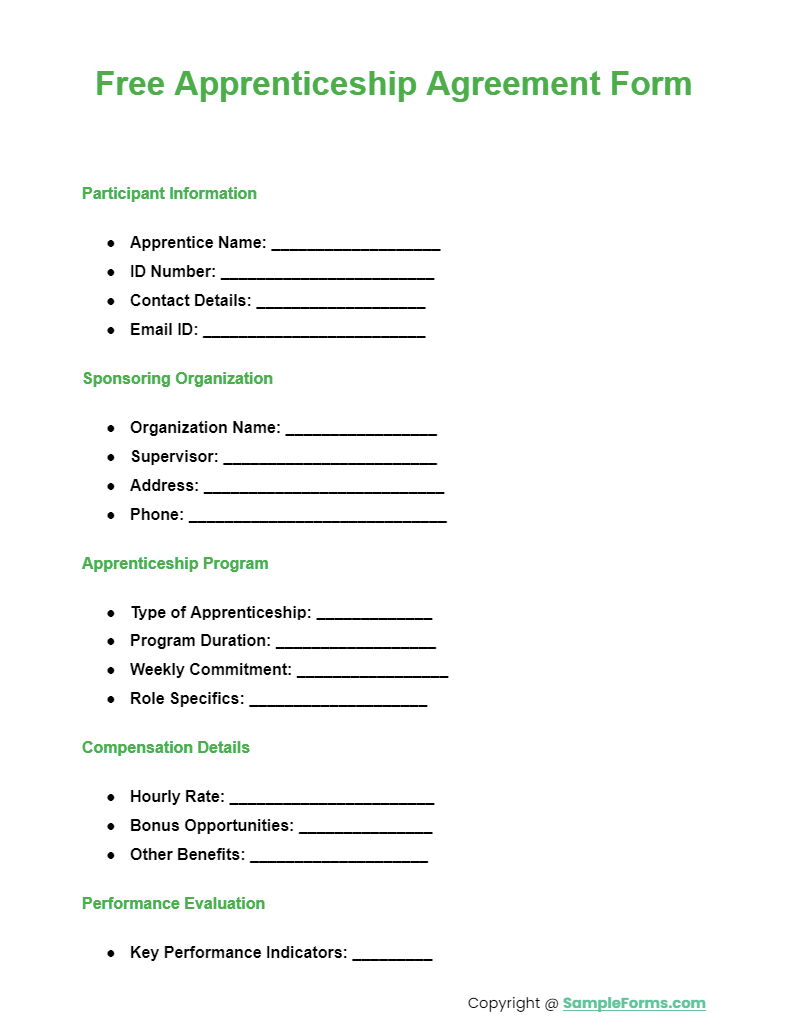
Access a no-cost version of the Apprenticeship Agreement Form, perfect for startups and small businesses wanting to establish formal training pathways similar to those in a Promissory Note Agreement Form.
Apprenticeship Agreement Form Doc
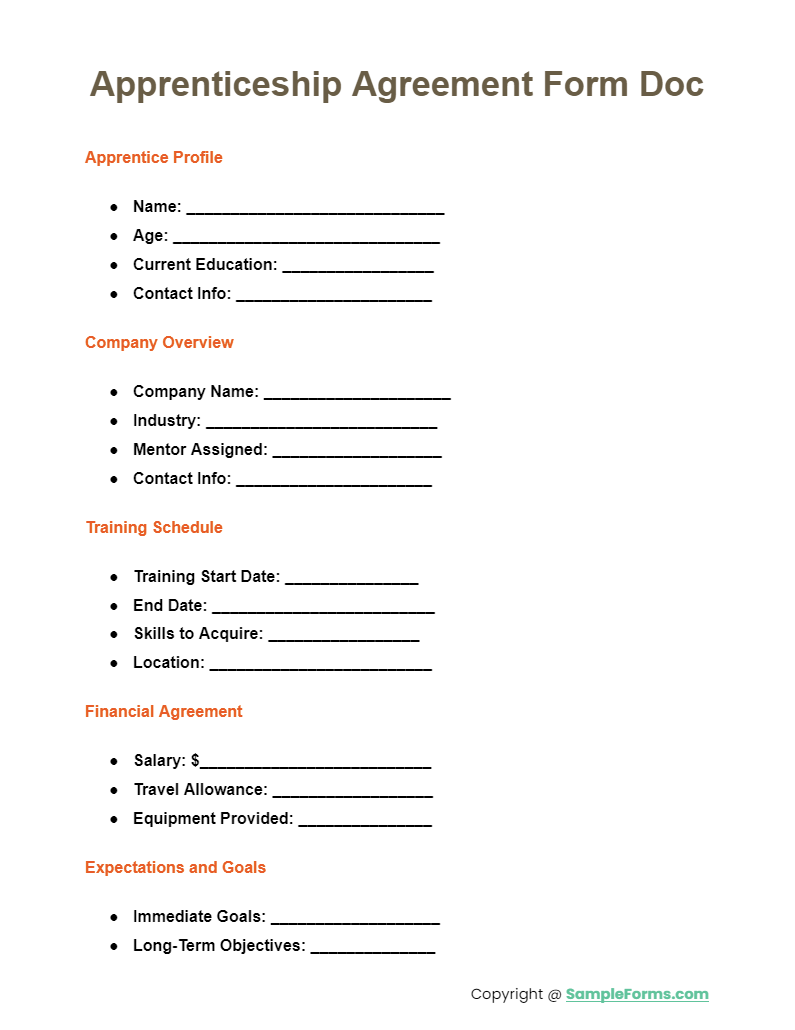
More Apprenticeship Agreement Form Samples
Apprenticeship Contract Agreement Form
Apprenticeship Transfer Agreement Form
Apprenticeship Workplace Agreement Form
Training Apprenticeship Agreement Form
Apprenticeship Application Agreement Form
Modern Apprenticeship Training Agreement Form
Student Apprenticeship Agreement Form Sample
Apprenticeship Agreement Form Example
Apprenticeship Agreement Form in Word Format
How to Draft an Apprentice Form?
Creating an apprentice form is crucial for setting clear expectations and responsibilities.
- Define Scope: Like a Lease Agreement Form, specify the duration and terms.
- Detail Responsibilities: Outline what is expected from both apprentice and employer.
- Set Goals: Identify the skills and knowledge to be gained.
- Include Evaluations: Plan for regular assessments.
- Legal Clarity: Ensure the form has legal standing, similar to an Investment Club Agreement Form.
How Do You Write an Agreement Between a Master and an Apprentice?
An agreement between a master and an apprentice formalizes the training structure.
- Identify Parties: Clearly state who is the master and who is the apprentice.
- Training Details: Like a Hold Harmless Agreement Form, outline the protection and responsibilities.
- Duration: Set the length of the apprenticeship.
- Compensation: Specify any stipend or payment.
- Signatures: Both parties need to sign, validating the agreement. You may also see Distribution Agreement Form
What Are the Two Common Types of Apprenticeship?
There are primarily two types of apprenticeships to consider.
- Traditional Apprenticeship: Focuses on manual trades and crafts.
- Modern Apprenticeship: Involves newer industries and technologies, akin to roles outlined in a Consignment Agreement Form.
How Do You Ask a Company for an Apprenticeship?
Approaching a company for an apprenticeship requires preparation and professionalism.
- Research: Understand the company’s business and apprentice programs.
- Inquiry Letter: Draft a formal request similar to a Investment Agreement Form showing your commitment.
- Follow-Up: Contact the company to discuss potential opportunities.
- Prepare Your Resume: Tailor your application to highlight relevant skills.
- Interview Ready: Be prepared to discuss why you’re a good fit. You may also see Partnership Agreement Form
What Are the 4 Steps to Get Started as an Apprentice?
Starting as an apprentice involves a few strategic steps.
- Choose a Field: Decide which industry or trade interests you.
- Find Programs: Look for available apprenticeship programs.
- Application Process: Submit applications, akin to filling out a Purchase Agreement Form.
- Interviews: Successfully complete interviews and assessments. You may also see Participation Agreement Form
What Are the 4 Reasons Why You Should Consider an Apprenticeship?
Considering an apprenticeship can offer significant benefits.
- Hands-On Training: Gain practical experience in your field.
- Earn While Learning: Receive a salary during your training.
- Career Pathways: Open doors to future employment opportunities.
- Certifications: Obtain valuable industry certifications, as crucial as a Guarantor Agreement Form in business.
What Are the Advantages and Disadvantages of Getting an Apprenticeship?
| Advantages | Disadvantages |
|---|---|
| Hands-on experience and skill development | Limited career fields may be available |
| Earn income while learning | May earn less than entry-level employees |
| Potential for job placement after training | Commitment to a specific path for duration |
| Gain industry-recognized certifications | Intense competition for popular programs |
| Networking opportunities in the industry | Work and study balance can be challenging |
This table highlights the trade-offs involved in choosing an apprenticeship, similar to weighing terms in any formal agreement. You may also see Development Agreement Form
The Different Kinds of Apprenticeship Agreement Forms
There are various types of forms that allow those people who wish to take on an apprentice to set the terms of how their apprenticeship will be and the duration of such. Here are some examples of these types of forms:
- Apprenticeship Confidentiality Agreement Forms are used by those mentors who want their possible apprentice to agree that some information during the apprenticeship must remain confidential, otherwise it could mean immediate termination of the apprenticeship. You may also see Administration Agreement Form
- Apprenticeship Contract Agreement Forms are for those apprentices who wish to know the terms of the contract before agreeing to the apprenticeship. This is also for those people who are mentoring to make sure that the possible apprentice agrees to the rules set by him to ensure a smooth and orderly apprenticeship program.
- Training Apprenticeship Agreement Forms are forms that mentors use to make the possible apprentice know of the kind of training he’ll be receiving. If the person accepts, then he’ll begin training and become an immediate apprentice.
- Student Apprenticeship Agreement Forms are used by mentors to hand out to those students of certain schools that applied for an apprenticeship program. This lets the students know what it’s like in their profession and helps them decide on their career path. You may also see Management Agreement Form
The Importance of Apprenticeship Agreement Forms
It’s really important that mentors establish a clear and accurate contract for those who are willing to take part in their apprenticeship programs. Think of these forms in the same way you’d think about a Partnership Agreement Form; both forms require two parties to come into some sort of agreement before working together. You may also see Volunteer Agreement Form
These forms are also important for those who wish to become an apprentice. These help them figure out what kind of work they’ll be needed to do, along with the hours they’ll have to do them. It helps give them the choice if this is indeed the profession they want to try their hands on, or if there’s another one out there that’s more suited for them.
Forms like these can forge bonds between an apprentice and a mentor as it shows that both sides know what they’re getting into and that they’re both willing to cooperate with one another. You may also see Subcontractor Agreement Form
How do you write an Apprenticeship Agreement?
What happens at the end of an Apprenticeship Agreement?
At the end of an Apprenticeship Agreement, several outcomes can occur:
- Completion of Training: The apprentice typically completes the training program, having gained the skills and knowledge outlined in the agreement. You may also see Tenant Agreement Form
- Assessment and Certification: The apprentice may undergo an assessment or examination. Successful completion often leads to a certification or qualification in their trade or profession.
- Employment Opportunities: The apprentice might be offered a full-time position with the employer, although this is not guaranteed. You may also see Condominium Lease Agreement Form
- Feedback and Review: Both the apprentice and employer may provide feedback on the apprenticeship experience, which can be valuable for future improvements.
- Transition Support: The employer or training provider may offer support to the apprentice in transitioning to regular employment, either within the same organization or externally. You may also see Exchange Agreement Form
- End of Contract: The contractual obligations of both parties come to an end, and the apprentice is no longer bound to the employer under the terms of the apprenticeship agreement.
- Further Opportunities: Depending on the situation, the apprentice might pursue advanced training, further education, or different employment opportunities. You may also see Driveway Easement Agreement Form
The end of an apprenticeship is a significant milestone, marking the transition from learner to skilled worker, and opens up various pathways for the apprentice’s career. You may also see Service Contract Agreement Form
Why you need an Apprenticeship Agreement?
Related Posts
-
FREE 50+ Mortgage Forms Download – How to Create Guide, Tips
-
FREE 4+ Real Estate Listing Information Forms in PDF | MS Word
-
FREE 7+ Garage (Parking) Rental Agreement Forms in PDF | MS Word
-
FREE 7+ Office Lease Agreement Forms in PDF | MS Word
-
FREE 4+ Salon Booth Rental Agreement Forms in PDF | MS Word
-
FREE 5+ Roommate Rental Agreement Forms in PDF | MS Word
-
Electrical Subcontractor Agreement Form
-
FREE 10+Non-Disclosure Forms in PDF | MS Word
-
FREE 5+ Construction Subcontractor Agreement Forms in PDF | MS Word
-
FREE 5+ Real Estate Lease Guarantee Co-Signer Agreement Forms in PDF | MS Word
-
FREE 5+ Lease with an Option to Purchase Agreement Forms in PDF | MS Word
-
FREE 7+ Realtors Lease Agreement Forms in PDF
-
FREE 10+ Subordination Agreement Forms in PDF | MS Word
-
FREE 10+ Condominium Lease Agreement Forms in PDF | MS Word
-
FREE 5+ Lottery Agreement Forms in PDF | MS Word
